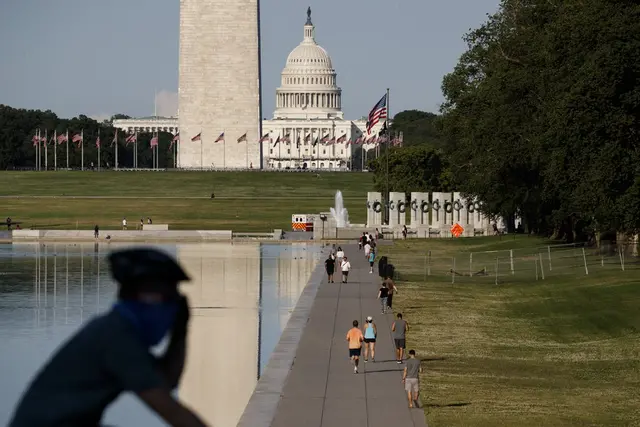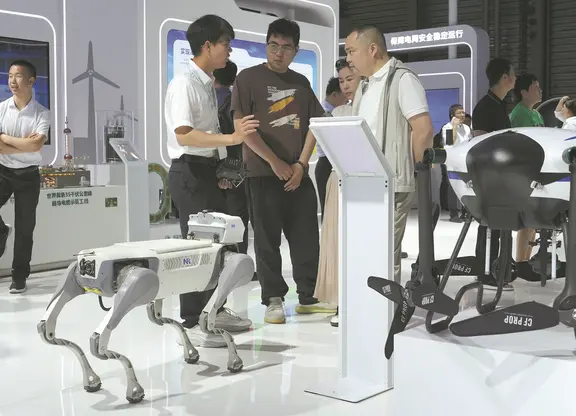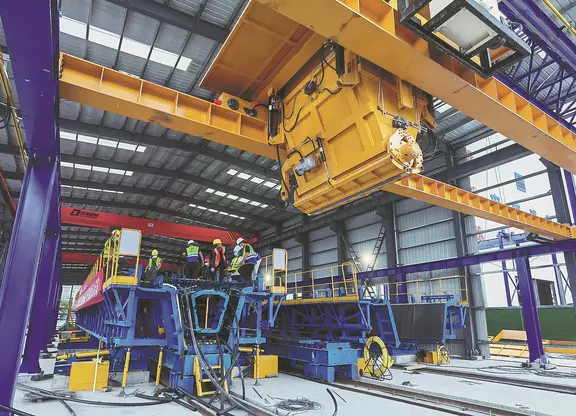-China's imports of U.S. agri-products increased by 1.1 times to about 5 billion U.S. dollars in the first quarter this year, among which, the soybeans totaled 7.814 million tons, an increase of 2.1 times.
-U.S. companies have announced 2.3 billion dollars in new direct investment projects in the Chinese market in the first quarter, almost the same as last year's quarterly average.
-Even U.S. Secretary of State Mike Pompeo, a long-time China hawk, has admitted that "the challenges of American economic growth and prosperity are deeply intertwined today with the Chinese economy."
The International Monetary Fund (IMF) on Wednesday predicted that the global economy will shrink by 4.9 percent this year, a bleak economic outlook as the COVID-19 pandemic continues to ripple across the globe.
This is a moment when China and the United States should work even closer, not the other way around. As the world's top two economies, they shoulder a special responsibility in stabilizing global economic growth, and in delivering a robust economic bounce-back from the pandemic-induced contraction.
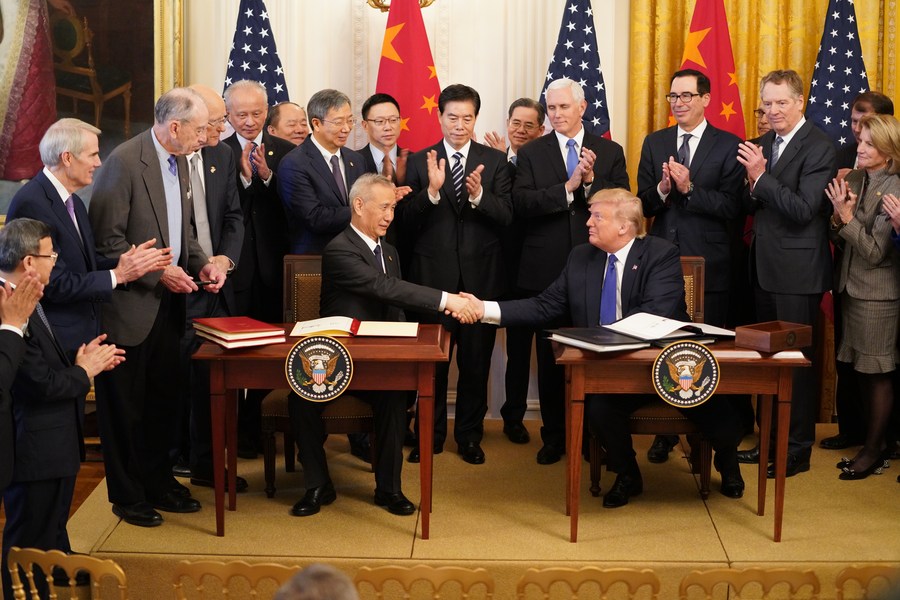
U.S. President Donald Trump and Chinese Vice Premier Liu He, who is also a member of the Political Bureau of the Communist Party of China Central Committee and chief of the Chinese side of the China-U.S. comprehensive economic dialogue, shake hands after signing the China-U.S. phase-one economic and trade agreement during a ceremony at the East Room of the White House in Washington D.C., the United States, Jan. 15, 2020. (Xinhua/Wang Ying)
The China-U.S. phase-one economic and trade agreement signed in January has cleared some clouds overshadowing the global economy, and injected a dose of certainty for a perplexed world.
However, the deal's implementation went off to a bumpy start as the sudden strike of the coronavirus pandemic has crippled global trade and battered the world economy. Some skeptics even questioned whether the trade deal would risk a short shelf life.
Despite all these bad news, China has so far honored its commitment in the trade deal. According to Customs data, China's imports of U.S. agri-products increased by 1.1 times to about 5 billion U.S. dollars in the first quarter this year, among which, the soybeans totaled 7.814 million tons, an increase of 2.1 times.
The Wall Street Journal, noting that the U.S.-China trade jumped by almost 43 percent in April from March, called China "a rare bright spot for U.S. farmers and other exporters" amid the ravaging coronavirus outbreak.
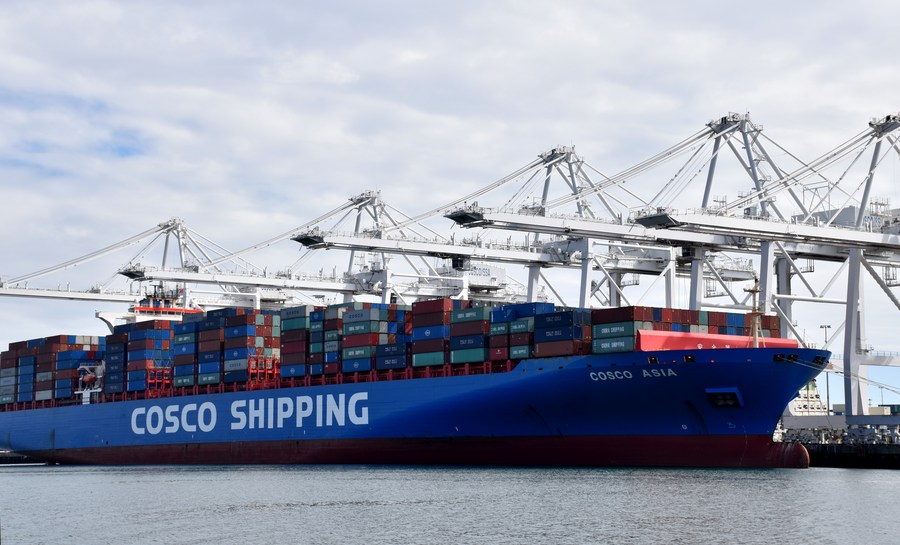
Containers of China COSCO Shipping Corporation Limited are seen at the Port of Long Beach in Los Angeles County, the United States, Feb. 27, 2019. (Xinhua/Li Ying)
And China has made it abundantly clear in this year's government work report that it "will work with the United States to implement the phase one China-U.S. economic and trade agreement."
Nonetheless, it takes two to tango. For the bilateral trade relations to prosper, and the world economy to return to growth, the United States has a critical role to play. Yet what has been going on in Washington is indeed troubling.
Some China-hardliners and trade hawks in the current U.S. administration have used the pandemic to crank up economic nationalism and trade protectionism, and to sell their "de-coupling from China" theories to the American public.
A few days ago, White House trade advisor Peter Navarro even declared on TV that America's trade deal with China is "over," a claim only later dismissed by U.S. President Donald Trump, who tweeted that the agreement is "fully intact."
Despite all the anti-free trade rabble-rousing in Washington, the confidence of American businesses in the Chinese market remains strong.
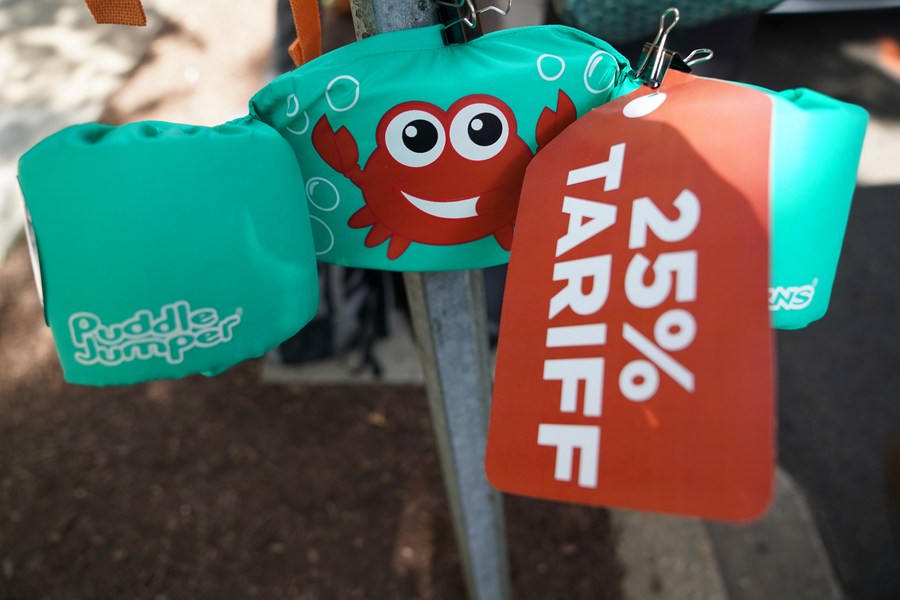
Anti-tariff posters are seen on a life vest outside the building of U.S. International Trade Commission in Washington D.C., the United States, June 17, 2019. (Xinhua/Liu Jie)
According to a new study by the Rhodium Group, U.S. companies have announced 2.3 billion dollars in new direct investment projects in the Chinese market in the first quarter, almost the same as last year's quarterly average.
Even U.S. Secretary of State Mike Pompeo, a long-time China hawk, has admitted that "the challenges of American economic growth and prosperity are deeply intertwined today with the Chinese economy."
A successful implementation of the China-U.S. trade agreement relies on both sides to honor their respective commitments. Washington should realize that by seeking economic and political tensions with Beijing, it is risking derailing the prospect of the trade agreement.
A break-up of the hard-won trade deal serves no one's interests. Washington should check its own protectionist impulse and start working with Beijing in good faith, so as to ensure that the trade pact that has cost the two sides almost two years to build will not collapse.
Cooperation is the only right option for China and the United States. As the international community is still grappling with the pandemic and its economic fallout, it is more imperative than ever for the two sides to join hands and work together.
(ASIA PACIFIC DAILY)
 简体中文
简体中文

